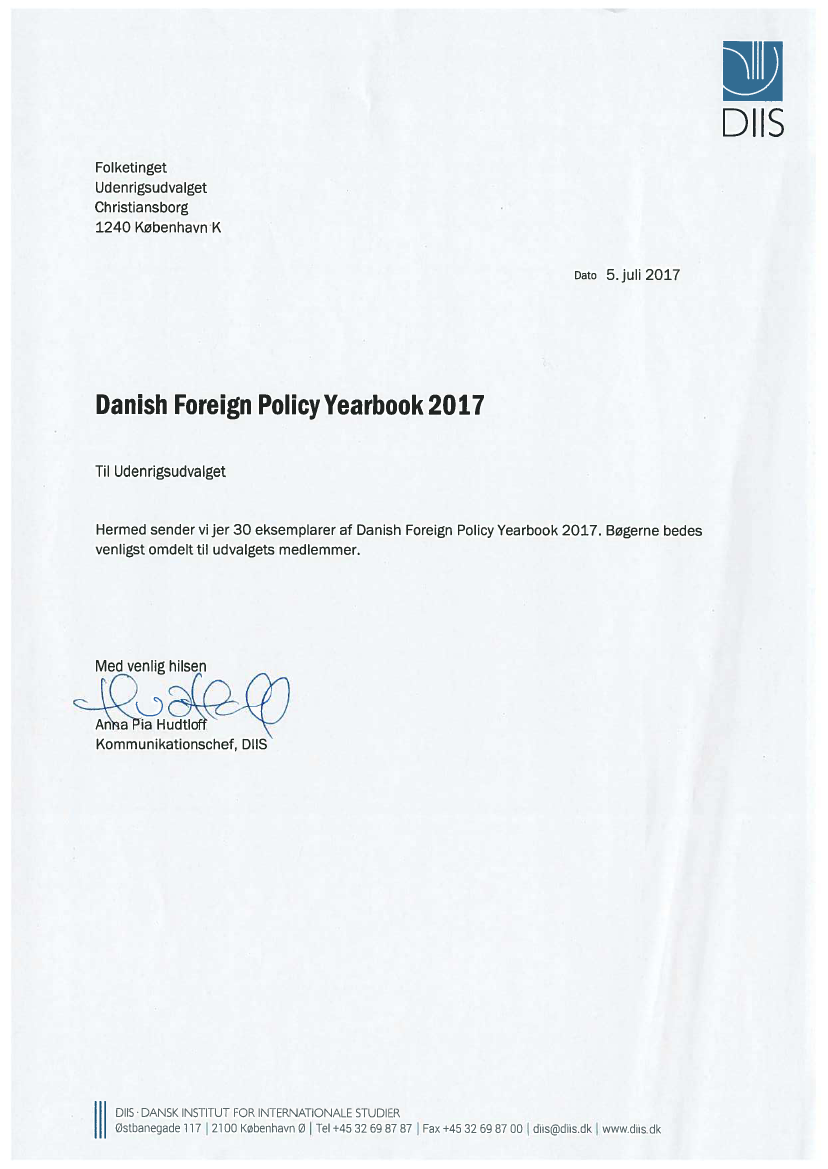
DuS
Folketinget
Udenrigsudvalget
Christiansborg
1240 København K
Dato
5.juli 2017
Danish Foreign PolicyYearbook 2017
Til Udenrigsudvalget
Hermed sender vi jer 30 eksemplarer af Danish Foreign Policy Yearbook 2017. Bøgerne bedes
venligst omdelt til udvalgets medlemmer.
Med venlig hilsen
Kommunikationschef, DIIS
DuS DANSK INSTITUT FOR INTERNATIONALE STUDIER
Østbanegade 117 2100 København Ø
I
Tel +4532 69 8787
Fax +4532 69 87 00
diis@diisdk
www.diis.dk